|
|
RICHARD GRAY 06.11.1817 TO 25.07.1896 seventh, last child and third son to John Gray and Elizabeth (Killett) Gray.
Richard Gray married Maryann Gold∕Gould on the 12.11.1838. They had eight children:–
16.01.1840 Ellen Gray m. Thomas Rentle
06.02.1842 Jane Gray m. Charles Stiles
06.08.1844 Alexander Sinclair Manson Gray - Elizabeth Woodham
03.08.1846 Richard Gray (Jnr.) m. Elizabeth Voss
19.08.1848 William Henry Gray m. Deborah Mauldon
15.12.1850 John Robert Gray m. Mary Atkinson
01.07.1853 Thomas Gray m. Lillie Lane
30.08.1861 Charles Hayward Gray died 16/04/1866
Richard Gray
Born Sydney 6 November 1817 and died Melbourne 25 July 1896
Richard Gray was the seventh child of John and Elizabeth Gray (nee Killett). He was born in Sydney on 6 November 1817. His parents had him christened at St. Philip's on 21st June 1818 together with two of his elder sisters, Hannah and Ann Louise. Richard's father was drowned on 4 September 1818 whilst he was performing his duties as the Constable/Clerk of the Markets. He had fallen into one of the water wells.
His mother was then left to rear seven children by herself. As his mother's time was taken up with working to support her children, Richard was looked after by his older sister, Jane. Most of his early life was spent around the Windsor region and he played with many of the young Aboriginals along the banks of the Hawkesbury River.
He became a Carpenter/Cabinetmaker and obtained work in the Newtown area of Sydney where his skills were much in demand for the construction of buildings and houses.
It was during the year of 1838 that Richard met Maryann Gold. He courted her and after seeking her mother's permission, they were married by Rev. William Cowper at St. Philip's Church on 12th November 1838. Richard's beloved older sister Jane and her husband, Alexander Sinclair Manson, were the witnesses to the marriage.
Richard and Maryann returned to Windsor and set about raising a family. He had a small shop and plied his trade of carpentry. In due course, their first child was born. Ellen came into the world on 16th January 1840 and was christened on 2nd February 1840 by Henry T Stiles in a private ceremony. She had been called Ellen after Maryann's mother Ellen.
The second child, a daughter, arrived on 6th February 1842 and she was named Jane. She was baptised by Frederick Lewis of the Wesleyan Church on 27th March 1842.
On 6th August 1844 the first son was born at Cornwallis. He was named Alexander Sinclair Manson Gray after Richard's brother–in–law Alexander Sinclair Manson. He was christened on 22nd September 1844 by Jonathan Innes of the Wesleyan Church.
Richard Gray Jnr was born on 3rd August 1846 at Windsor. He was christened by Henry T Stiles at St Matthew's Church of England on 4th October 1846.
Richard Gray was by now conducting his trade around the Windsor area, however, he was becoming restless and felt that a change of location would help him improve his family's lifestyle. He moved to Sydney, and found that the work was not to his liking so he returned to Windsor for the time being.
It was here that their fifth child was born. William Henry came into the world on 19th August 1848, and was christened by F Wilkinson at St Matthew's on 1st October 1848.
Once again, Richard took his family to Sydney and found employment in and around the Surry Hills area. He and Maryann had their sixth child there, named John Robert who was born on 15 December 1850. He was christened by B L Watson at St Lawrence Church of England on 12 January 1851.
By now, Richard realised that to improve the life of his family he must seek further horizons and made the decision to move to the new state of this founding nation. The whole family set sail on the barque "Emma" for Melbourne in 1852. On arrival in the port of Melbourne he found accommodation in Little Collins Street. His trade and talents were in demand in this new town. On 1st July 1853 their seventh child was born and was named Thomas after Maryann's dead father, Thomas Gold.
Richard worked hard on many of the early buildings of Melbourne, and after spending some years in the town of Melbourne he moved his family to Emerald Hill and was to become one of its early pioneers. It was here that Richard and Maryann were to have their last child. He was Charles Heywood and he was born on 13th August 1861. Charles was to become the light of Richard's life. Maryann's health was now starting to deteriorate and the general caring of the family fell upon the shoulders of the two older girls, Ellen and Jane.
Maryann's mental health began to fade and her condition became so serious that she was placed in an asylum. Ellen wrote to her grandmother, Elizabeth Gray, telling her of her father's great unhappiness and worry for his wife's life.
The burden of caring and running the house whilst her father worked was now left to Jane. She proved to be a most caring and competent person and her father relied on her more as each month went by and Maryann's condition did not improve. To add to Richard's worries his beloved youngest son, Charles, took sick with Scarlet Fever, and despite the vain efforts of Richard, Jane and the doctors, the boy could not be saved. He died on 26th April 1866. Richard was distraught and wrote to his mother Elizabeth telling her of his great sorrow. The death of Charles finally destroyed what sanity Maryann had left.
Maryann died on 17 January 1874 of tuberculosis of the lungs and stomach which she had contracted the previous year. She was laid to rest with her youngest son, Charles, in the Melbourne General Cemetery.
As with all grief time slowly heals the wounds and Richard realised that he must carry on and care and provide for his growing family. He bought shares in the Walsend Coal Mining Co. at Newcastle. He also saved his money and bought houses in MacFarlane Street, Emerald Hill which he then let.
By now Richard's sons had grown into young men. He sent his eldest son Alexander to live with his widowed older sister Jane Manson in Sydney. Alexander was to remain in Sydney for the rest of his life, and he was a most inventive and clever man. Alexander married Elizabeth Woodham in Sydney on 25 March 1868.
Richard Gray died on 25th July 1896 in his home at 12 MacFarlane Street, South Melbourne, aged 78 years. He was a first generation Australian and pioneer of the Emerald Hill district. He had not been a war hero or an adventurer, but he was a man who sought to give his family a good start in life and to give them the values of love, hard work, and above all to care for the family. He was a good citizen.
Richard was buried with his wife and son at the Melbourne General Cemetery.

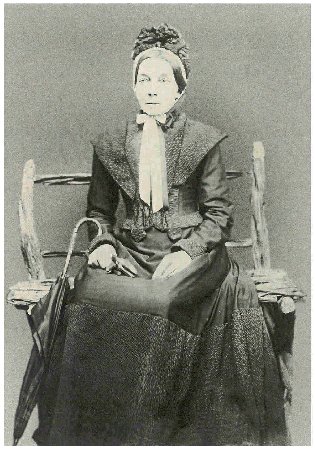 In 1864 Richard and Maryann announced in the local papers the engagement of their eldest daughter Ellen to Thomas Rentle. This union was to cement not only a new generation of the family but a lifelong friendship between Richard and his son–in–law on both a personal and business level. For Richard was to use his trade of carpentry to make the coffins and trappings that Thomas would use in Thomas Rentle's Funeral business.
In 1864 Richard and Maryann announced in the local papers the engagement of their eldest daughter Ellen to Thomas Rentle. This union was to cement not only a new generation of the family but a lifelong friendship between Richard and his son–in–law on both a personal and business level. For Richard was to use his trade of carpentry to make the coffins and trappings that Thomas would use in Thomas Rentle's Funeral business.
Ellen and Thomas were married at St Luke's Church at Emerald Hill on 25 July 1864. Thomas and Ellen had eight children between 1865 and 1878.
Anne Mary Ann 1865 – 1938 m. James Russell
Thomas Richard 1867 – 1907 m. Margaret Rankin Price
Emma J 1869 – 1915 m. John S. Maddock
Jane 1871– 1930 m. Percy Ellis
Caroline 1873 – 1937 m. Issac J. Walshe
Nelly 1875 – 1875
Charles Victor 1876 – 1918 m. Mary Campbell Price
Gertrude Ellen 1878 – 1931

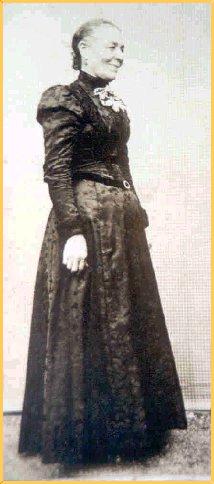
Jane was the second child of Richard and Mary Ann Gray and their second daughter. She was born at Cornwallis NSW on 4th Feb 1842. She came to Victoria with her parents and siblings in 1852.
She grew up and was educated in Emerald Hill later to become South Melbourne.
Most of her earlier life was spent caring for Charles Hayward her youngest brother who died in 1866 and then her ill Mother, who died in 1874. After those early tragedies she took up the work of a Laundress together with looking after her aging father.
By the 1880's she was helping her younger brother Thomas deal with the death of his young wife and the caring of his son George Hayward.
Jane, who had cared for her father and brothers during the illness and death of her mother, met and then married Charles Stiles, a handsome cab owner/driver, on 19th December 1882 at 77 Napier Street, South Melbourne. Richard lived with Jane and Charles for some time in Naiper Street, South Melbourne.
Jane became known to all her many nieces and nephews as AUNT GINNY and she lived in Cobden Street, South Melbourne.
She was particularly close to the families of her brothers William Henry and Thomas and her sister Ellen Rentle.
After the death of her husband Charles in 1910 she threw her energies into helping her sister–in–law Deborah, wife of her brother William Henry, in the setting up of a Laundry business at 402 Dorcas Street, South Melbourne which lasted until Deborah's death in 1923. Deborah and Jane must have had a very good relationship for in 1905 she brought Deborah a ticket in the 8 hours Day Lottery which was called "LITTLE MELBOURNE" to commemorate the birth of Deborah's 10th child Arthur Charles Mauldon Gray. The ticket duly won first prize of 1000 pounds.
Jane's health began to fail by 1924 and she went to live with her Niece–in–Law, Blanche Hannah Menzies, the wife of her dead Nephew, George Hayward Gray. Her sight failed and Blanche cared for her until her death on 18 Oct 1929 at 12 Kingston Street, Richmond.
Jane is buried with her husband Charles in the Melbourne General Cemetery.
One of the quirky things about Jane was a remark made in a letter by Ellen Rentle her sister that Jane never goes any where without her WRINGER this being a reference to her trade of being a Laundress.
Jane maintained the family bible noting and adding entries of family occurrences.

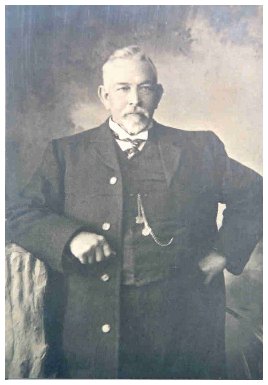 Alexander Sinclair Manson Gray
Alexander Sinclair Manson Gray
Born: 6th Aug 1844 Cornwallis N.S.W. Died: 15th March, 1924.
Buried: Waverley Cemetery N.S.W.
Married: Elizabeth Ann Woodham on the 23rd March 1868
at St Andrews Church Sydney N.S.W.
Witnessed by: Reuben Woodham, Joseph Davenport.
Alexander and Elizabeth Woodham had 7 Children:
Ada Cicely 1868 – 1944 m. Edwin Slingsby
Alexander. R.R. 1870 – 1870
Richard. A 1871 – 1885
Walter. W 1873 – 1943 m. Sarah Cox
Elizabeth. W 1875 – 1948 m. Bertie M Bosler
Sydney. W 1876 – 1948 m. Ada C Watson
Reuben. G.W. 1878 – 1960 m. Eliza S Slocombe
Occupation: BLACKSMITH, BUTCHER, ENGINEER and INVENTOR.
Many family stories abound about Alexander. They indicate a man of strong will and a determination to succeed in life and committed to the wealth and welfare of his family.
Although he went to Victoria with his father and mother and the rest of his siblings in 1851, he did not remain there. After he reached the age of 15 he returned to Sydney to stay with his Aunt Jane Manson.
Over the next few years he travelled between his Aunt Jane Manson home in Sydney and his Father Richard's home in Victoria on foot on more than one occasion.
He was the favourite Nephew of his Aunt Jane who called him Sandy after her departed husband Alexander Slincair Manson after whom he was named, he lived with her on and off between 1861 until he was married in 1868. When his Aunt Jane died he took care of all the arrangements and the finalisation of her intestate Estate, which was considerable by the standards of that era.
He operated a Butcher Shop in the Glebe area of Sydney through the 187''s and 1880's whilst dabbling in pony's and race horses in and around the Canterbury area of NSW hence his interest in the Starting Stalls. This was a result of his son Reuben who was his Jockey in many races and he often broke the line at the start and would be fined for this breach of the start of the race. So Alexander set about designing a fixed Stall that could be released by a starter hence the Jockey's not being able to get a false start and then being fined five pounds for the offence.
He also had other inventions which are explained in later pages.
From family stories he was much admired and respected by his brothers and sisters. Many letters between the families indicate his good counsel was often sought.
Photos of him in latter life reveal a handsome man of fine statue and aura of self–belief.
As with all families there were disappointments and Alexander and his wife Elizabeth had their problems and heartaches, they lost two sons in early life which would have been very sad, they also had problems with their son Walter whom appeared to be a bit of a lost soul from time to time. He dearly loved his daughters, this was reflected in his will. He wanted them to be happy in life and marriage and from time to time fretted about them. He even went to England in the early 1900's to try and reconcile a marriage breakdown of one his daughters.
His son Reuben was the light of his life, he was both an accomplished horseman, and had a fine tenor voice and could act on the stage which he did with some distinction.
Much of the above was related to me by his Great Granddaughter Nola Edwards nee Hughes who has shared photos and family stories with me.
On Alexander's Death certificate his occupation is described as Race Starting Stalls Manufacturer.
Strand barrier As per wikipedia
The horse racing starting barrier was pioneered in Australia and was first used at an official race meeting in 1894. Alexander Gray's single–strand barrier was among those first used. Versions of barriers designed by Alexander and Reuben Gray, were installed at race tracks in Australia and overseas between 1894 and about 1932. Barriers assured fair starts to races. Fair race starts encouraged owners to enter horses in races and punters to bet, and they contributed to changing horse racing from a social sporting event into a billion dollar industry.
Alexander Gray had concluded that the flapping of a starter's flag distracted the horses. An impetus for his invention was a £5 fine received by his son, Reuben, a jockey, for allowing his mount to step over the white chalk line that marked the start. His machine was first tried out at Canterbury Park Racecourse in New South Wales in February 1894. The prototype consisted of a single strand of wire at about the height of the horse's head that was attached to a spring at either end. When the device was activated the barrier sprang up and away from the horses. By the 1920's the single strand barrier had evolved into a spring–powered five-strand device designed by Johnson and Gleeson, but based on Gray's prototype, that resembled a strongman's chest expander.

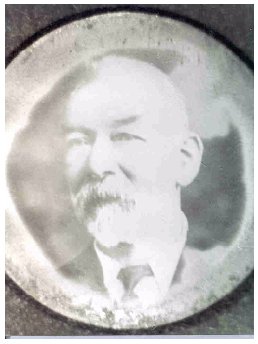 The next of Richard's Family to marry was Richard Jnr who was a Blacksmith by trade. He married Elizabeth Voss at the Wesleyan Church, Emerald Hill, on 10 April 1873. Richard and Elizabeth had three children. They were The next of Richard's Family to marry was Richard Jnr who was a Blacksmith by trade. He married Elizabeth Voss at the Wesleyan Church, Emerald Hill, on 10 April 1873. Richard and Elizabeth had three children. They were
Richard L.A. born 1874,
Bertha L 1878
Annie B. 1884.
Richard Gray was the fourth child of Richard and Mary Ann Gray and was born 3rd Aug 1846 at Cornwallis NSW. He like all his family came to Victoria in 1852.
He grew up and was educated and worked in Emerald Hill later to become South Melbourne. He took on the apprenticeship of Blacksmith which he took some pride in, when writing to his older brother Alexander in the late 1860's he writes of his job and signs off his letter as "Richard Gray, Common Smith".
He travelled to Sydney on numerous occasions to visit Alexander and his wife Elizabeth.
In 1873 on 10th April he married Elizabeth Voss whom was born in Dorset England. Elizabeth's father was listed as a Farrier. Over the next 10 years they had 3 children,
1874 – 1945 Richard Lester Augustus
1878 – 1972 Bertha Louise m. William H. Yeomans
1884 – 1967 Annie Beatrice m. David Robinson
During this time they lived at 101 Moray Street Emerald Hill.
During the late 1890's early 1900's Richard moves his family to live in Queenstown Tasmania, were he takes on employment with the Mt Lyell Mine. The Mount Lyell mine began as an open cut in the early 1880's.
Richard and Elizabeth apparently lived quietly there for the remainder of their lives. Their son never married and died in tragic circumstances on 30th Nov 1945. Their daughter Beatrice marries William Yeoman and lives in Victoria, their other daughter Annie Louise marries David Robinson a Tasmanian who worked as a Furnace man at the Mt Lyell Mine, a few years after they married they go to live in Queensland for some years before returning to Tasmania.
A family story relates that Richard accompanied his brother Alexander on a trip to England to promote Alexander's Starting Stalls sales amongst other things. However some problems arose and they had a falling out after the trip. How true this is cannot be proved now.
Richard's Grandmother Elizabeth Gray once referred to him in letter to her Granddaughter Rebecca Kirby as Richard being a fine young man. He had visited her in the 1860's with his brother Alex.
Richard died on the 19th November 1917. Both Richard and Elizabeth are buried in the Queenstown Cemetery in Tasmania.

William Henry was the fifth child of his parents Richard Gray and Mary Ann Gold/Gould. Little is known of his early life except that he came to Victoria with his parents in 1852 from NSW where he had been born at Cornwallis in 1848, Bill grew up and was educated in Emerald Hill (later to become South Melbourne).
William Henry's Profession described over the years as Butcher, Lather, Carpenter and Carrier. From letters written by his older brother Alexander and Wife Elizabeth to his younger brother John Robert Gray it relates that Bill was carrying out butchering in Alexander's Butcher shop in Sydney during the early 1880's. He seems to have drifted from job to job not applying himself like his other siblings.
How Bill met Deborah Mauldon is not known, they were married at Forest Lodge ULTIMO SYDNEY on the 3rd June 1884. Although the marriage certificate reads that her Christian name was Alice. Forest Lodge was the home of William's older brother Alexander. He was 36 and she was 18 years old.
William and Deborah returned to Melbourne where on the 24 November, 1884 she gave birth to the first of 11 children. He was their first son WILLIAM HENRY RICHARD GRAY.
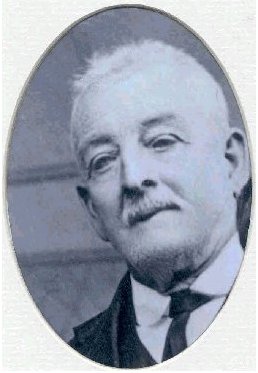 1884 – 1955 William Henry R. m. May Dawson
1884 – 1955 William Henry R. m. May Dawson
1886 – 1980 Alice May m. Samuel LeBusque
1888 – 1960 James Joseph m. Caroline Carmichael
1890 – 1967 Elizabeth Roberta m. Chapman, W. Smith
1892 – 1892 Ellen Jane. Died aged 1 month. *
1892 – 1973 Irene Dorothy. Adopted. m. David Hopkins.
1894 – 1966 Ruby Violet m. Francis Hails
1896 – 1958 Myrtle Ivy m. H. Hoyle, E. Grundy, J Canty.
1899 – 1985 Violet Doris m. Norman Dobson
1902 – 1983 Iris Vera m. David Sheppard
1905 – 1992 Arthur Charles m. Alma V. Snelling
1906 – 1968 Walter Robert m. D. Kelley, H. Vickers
*When their fifth child ELLEN JANE died aged one month they adopted a foundling child of similar age in her place who was named IRENE DOROTHY. This baby was left on their doorstep abandoned, so goes the family story, her real identity it is not known.
Richard Gray the father of William Henry bemoans the fact of his son's lack of responsibility towards his wife and children. Still Deborah did not leave him. They came and lived with Richard at his home at McFarlane Street in South Melbourne. Richard passed away on 25th July 1896, the year Deborah gave birth to their seventh child Myrtle Ivy.
After His Fathers Death. William does some work carrying articles from the wharf to warehouses in Melbourne and surrounds. This is not regular work so Deborah took in laundry to supplement the household income, this continued for the best part of the next 20 years, in spite of all her pregnancies. Deborah carried out this business at there home of 402 Dorcas Street, South Melbourne.
Whilst giving birth to their 10th child and third son on the 26th January 1905, William's sister Jane Stiles nee GRAY gave Deborah a present of a "8 HOUR DAY LOTTERY" ticket which was called "LITTLE MELBOURNE". This ticket duly won the first prize of 1000 pounds, a lot of money in those days.
William's wife Deborah passed away in her sleep aged 57 in her home of 402 Dorcas Street, South Melbourne Victoria, and is buried at Coburg Cemetery Victoria. 13.09.1865 – 02.02.1923
After the death of his wife, William went to live with his eldest son William Henry Richard Gray and his wife May in Sandringham however he returned to 402 Dorcas Street to live with his daughter Elizabeth Roberta and his sons James, Arthur and Walter.
He died the following year on the 13th September 1924, strangely it was his late wife's birth date. He was interred with his wife in the Coburg Cemetery.
Bill's life seemed to be unfulfilled, this could be explained by a family story of him being that when a young man he wanted to go with Burke and Wills on their fatal journey into the centre from which they never returned. How true this tale is I have not been able to prove either way.

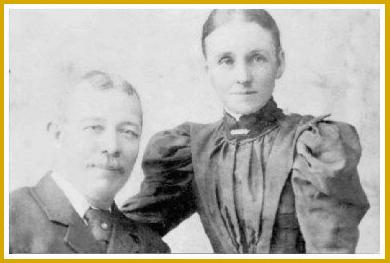 On 1 June 1874 John Robert GRAY married Mary Hannah Campbell Atkinson at Dorcas Street, Emerald Hill. John and Mary had nine children between 1875-1889. They were: On 1 June 1874 John Robert GRAY married Mary Hannah Campbell Atkinson at Dorcas Street, Emerald Hill. John and Mary had nine children between 1875-1889. They were:
1875 – 1876 Ada
1876 – 1877 Charles
1877 – 1882 Mabel
1879 – 1963 Lily m. Rushton Walker
1881 – 1964 Harry m. Olive E Parker
1883 – 1964 John R. m. Ethel E Allerton
1885 – 1970 Amy m. Edward Boulter
1887 – 1951 Robert m. Mabel M Brooks
1889 – 1926 William m. May Argall
John was a Bootmaker by trade and they lived in the Clifton Hill and Fairfield area.
John Robert Gray was the sixth child of Richard and Mary Ann Gray he was born 15th Dec 1850 in Sydney NSW.
After coming to Victoria with his parents and siblings in 1852, John Robert was raised in the Emerald Hill area of Victoria which later became known as South Melbourne. He took up the Trade of Bookmaking and remained in this Trade for all of his life.
He met and married a lass from Scotland who was Mary Hannah Campbell Atkinson on 1 June 1874. Mary was a native of Berwick in Scotland and her father John Atkinson was a Cloth Manufacturer. Mary Ann was always known as Polly within the family. John Robert also had a family nickname which was FLASH JACK.
After their marriage on the 1st June 1874 they had 9 children, unfortunately their first three children ADA, CHARLES, & MABEL all died within the first four years of life which must have been heart breaking for their parents. The remainder of their children survived and grew to adulthood. Although their youngest son William died relatively young leaving a wife and young daughter Edna May.
There was constant contact between John Robert and his brothers and sisters, letters reveal that the family as a whole was always seeking advice or support from one another on a regular basis and the welfare of each brother and sister was paramount within the family circle. Polly was constantly referred to in the letters as being frail and I have no doubt she was after having given life to 9 children.
The family lived in the same house in Fairfield Victoria for almost all of their lives it was called "Carlulup" 17 Park Crescent, Fairfield.
The sons of John Robert and Mary Hannah grew up and became very well established within the Business community. Their daughters made sound marriages. Some of the sons became supporters and contributors to the "COLLINGWOOD Football Club".
John Robert and Mary Hannah's marriage was tinged with early sadness however the rest of their lives were very happy and filled with much admiration of their children's success in commercial life and their happy marriages.
Mary Hannah was undoubtable the source of strength within the family and she guided and supported John Robert through out their married life.
John Robert GRAY died on the 18 Oct 1928 his wife Mary Hannah died in 1934 both are buried in the same plot with their first three children in Melbourne General Cemetery.

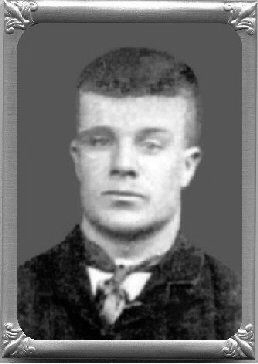 Thomas married Lillie Lane, an actress on 3 September 1873 and they had two sons.
Thomas married Lillie Lane, an actress on 3 September 1873 and they had two sons.
Richard W born 1876 died 1876
George H born 1879 m. Blanche Hannah Mann
Thomas was a Bootmaker by trade.
Thomas was the second youngest child of Richard and Mary Ann Gray. He was born 1 July 1853 in Victoria a year after his parents and siblings arrived in Victoria in 1852 from New South Wales. He grew up in around Emerald Hill which later became South Melbourne.
Thomas took on the Trade of Bookmaker like his older brother John Robert.
In 1873 he meets and marries Lillie Lane an Actress who was only 15 years old and had to have her parents consent to marry Thomas. Lillie had been born in Tasmania at Westbury.
Their first Child Richard William Thomas was born in March of 1876 however he suffered from a wasting disease and died 28 April 1876. This must have been very upsetting for this young married couple. Their second child George Hayward was born 5th February 1879.
Disaster occurred in 1882, Lillie who was only 24 years old contracts and dies of Pulmonary Consumption. This must have been shattering for Thomas to loose the love of his life and to be left with a young son to raise by himself. Thomas buried his wife with their son Richard in the Melbourne General Cemetery.
Thomas never remarried perhaps he was too heart broken after loosing both his son and wife. His sister Jane Stiles helped support him with the raising of his son George.
It is understood that Thomas worked in the same boot making business at Fairfield Victoria as his brother John Robert for the rest of his life.
Thomas's son George married in 1900 on 26th July to Blanche Hannah Mann and they had 6 children.
George died on the 10th Apr 1915 and was buried at the Coburg Cemetery. His wife remarried in 1916 to Robert Stuart Menzies a Scottish Seaman. They raised George's children under Robert's surname Menzies.
By 1918 Thomas health had taken a turn for the worse and he died on the 24th October after a short illness.
A death notice placed in the Age Newspaper in Melbourne reads that Thomas was the BELOVED Grand Father of Lily, Elsie, George, Alma, Violet and Jean Menzies also beloved brother of Jane Stiles.
He is buried with his son George in the Coburg Cemetery. Not far away is the burial site of both the daughter–in–law and her second husband, Blanche and Robert Menzies.
Thomas' Grandson George William Thomas (Gray) Menzies was killed at Tobruk during the World War 2.
"Thomas life was full of sadness he never found love again."

Charles Heywood Gray born on the 13th August 1861. Charles was to become the light of Richard's life. Maryann's health was now starting to deteriorate and the general caring of the family fell upon the shoulders of the two older girls, Ellen and Jane. Charles, took sick with Scarlet Fever, and despite the vain efforts of Richard, Jane and the doctors, the boy could not be saved. He died on 26 April 1866. Richard was distraught and wrote to his mother Elizabeth telling her of his great sorrow. The death of Charles finally destroyed what sanity Maryann had left.

NOTES...
Reuben Gray 12 handmade models
These models of horse and dog racing starting barriers were made by Reuben Gray as prototypes of his racing inventions. Reuben also made models of the single–strand barrier invented by his father Alexander Gray.


The horse racing starting barrier was pioneered in Australia and was first used at an official race meet in 1894. Alexander Gray's single–strand barrier was among those first used. Versions of barriers designed by Alexander and Reuben Gray, were installed at race tracks in Australia and overseas between 1894 and about 1932. Barriers assured fair starts to races. Fair race starts encouraged owners to enter horses in races and punters to bet, and they contributed to changing horse racing from a social sporting event into a billion dollar industry.
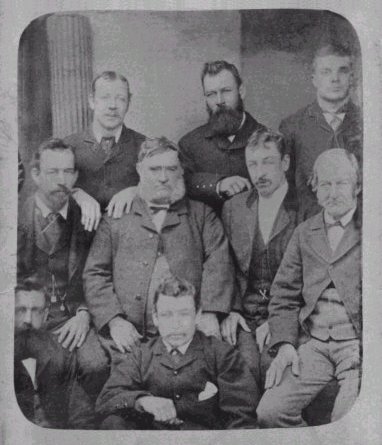
Left to Right Top Row JOHN ROBERT GRAY, JAMES SLOCOMBE, THOMAS GRAY,
Left to Right Centre Row ALEXANDER GRAY, UNKNOWN MALE, RICHARD GRAY jr, RICHARD GRAY.
Left to Right Bottom Row UNKNOW MALE, WILLIAM HENRY GRAY.
 Above written by
WENDY CANTY Above written by
WENDY CANTY
Great-great-granddaughter (75711) 1936 – 2017
 Email Editor
Email Editor

The Early Years ¦
Elizabeth Gray 1803 - 1836
William Gray 1805 - 1851 ¦
Jane Gray 1808 - 1880
John Gray Jr. 1810 ¦
Hannah Gray 1813 - 1856
Ann Louise Gray 1815 - 1874 ¦
Richard Gray 1817 - 1896
Letters from Elizabeth Killett Gray ¦
Trials ¦ Trips & Ships
Letters from William J.B. Gray ¦ Reunions
Service Records here and here ¦
Crest & Tartan
Special Acknowledgements

In the Beginning
|
|

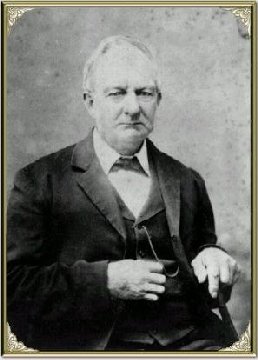




 Alexander Sinclair Manson Gray
Alexander Sinclair Manson Gray The next of Richard's Family to marry was Richard Jnr who was a Blacksmith by trade. He married Elizabeth Voss at the Wesleyan Church, Emerald Hill, on 10 April 1873. Richard and Elizabeth had three children. They were
The next of Richard's Family to marry was Richard Jnr who was a Blacksmith by trade. He married Elizabeth Voss at the Wesleyan Church, Emerald Hill, on 10 April 1873. Richard and Elizabeth had three children. They were 


 Above written by
WENDY CANTY
Above written by
WENDY CANTY Email Editor
Email Editor

